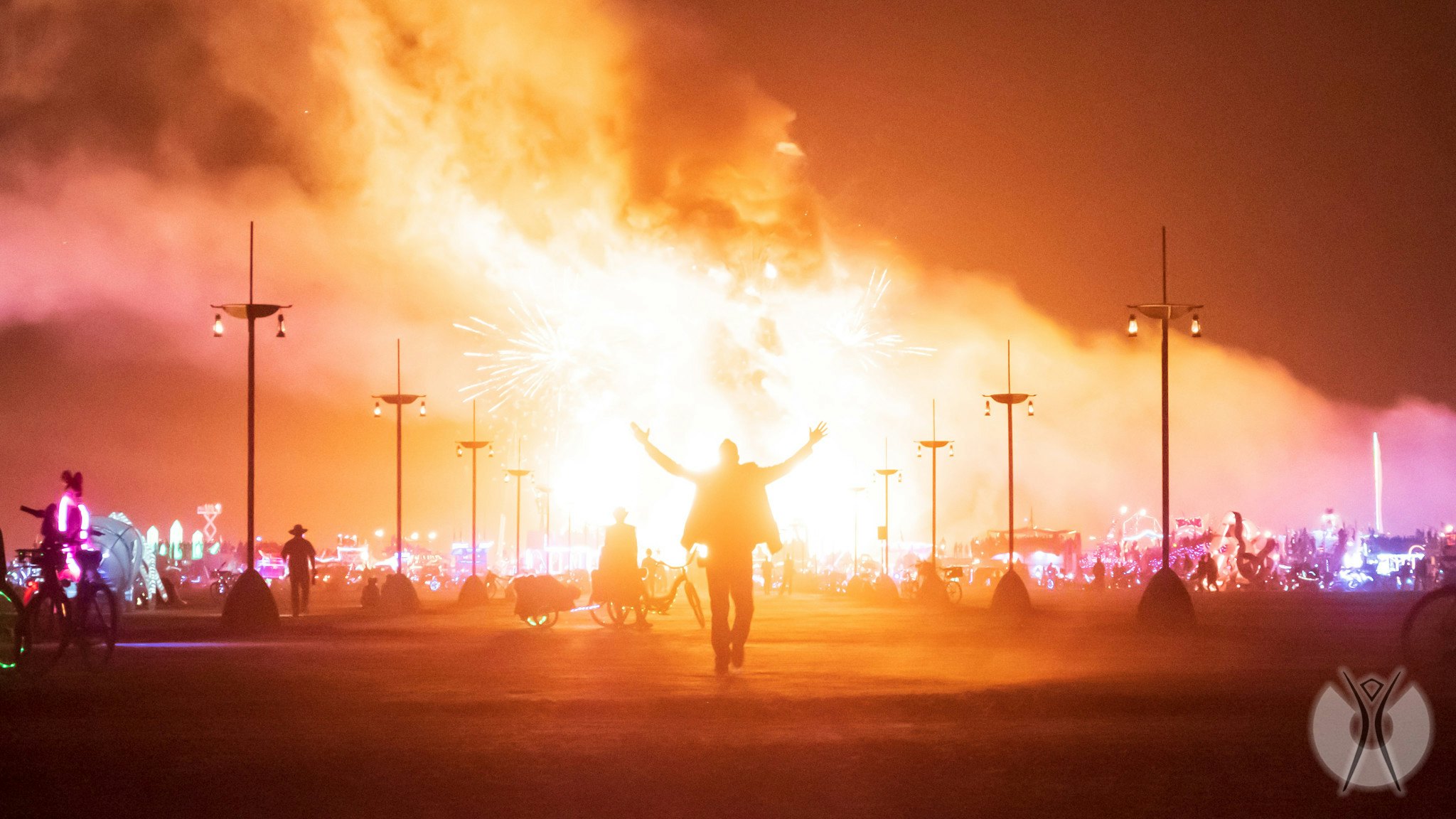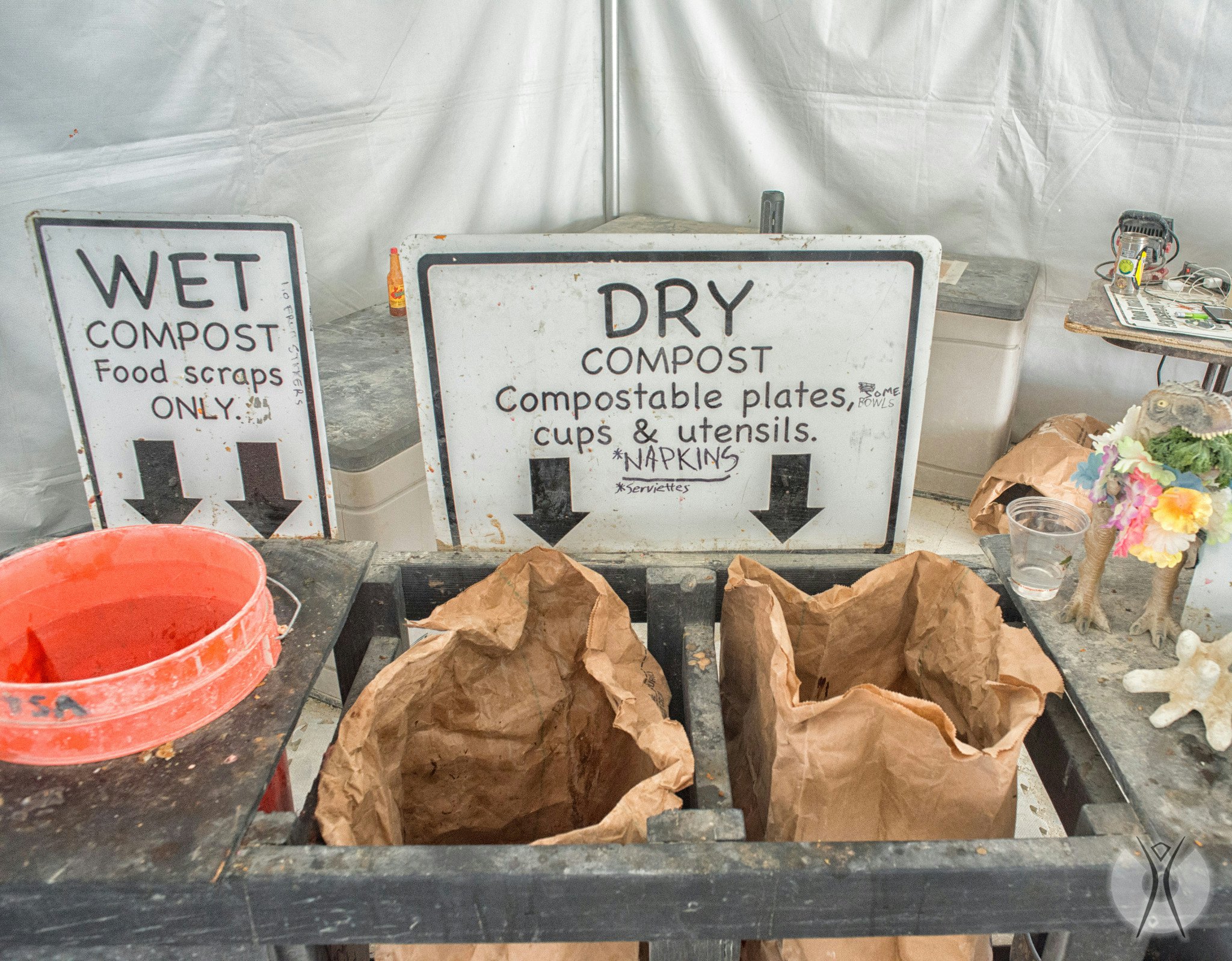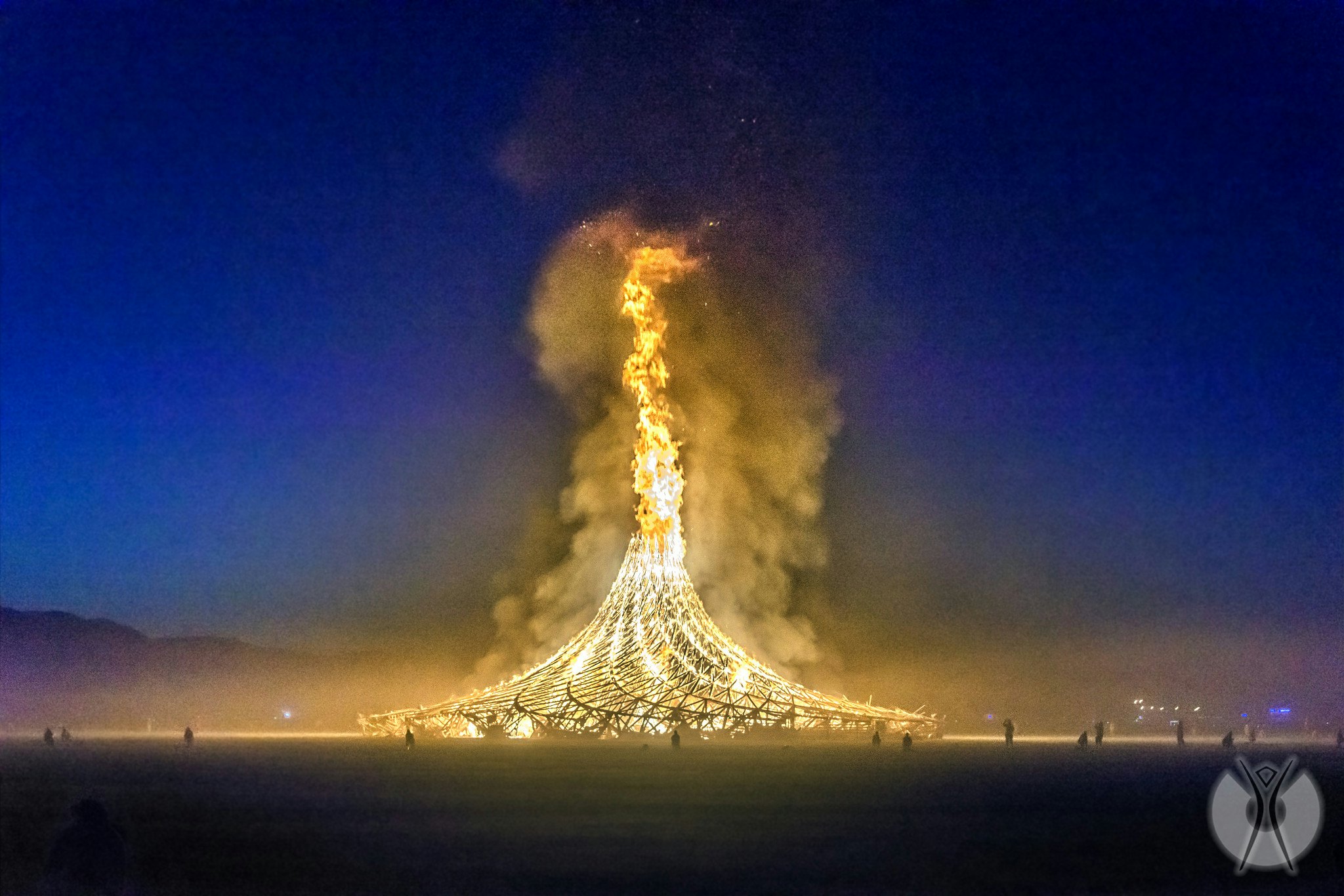

Burning Man is looking for ways to become more sustainable. © Alex Stoll
It’s a hard truth for ‘Burners’ that Burning Man puts a staggering amount of pollution in the air when it burns art sculptures, a temple, and its central effigy. The ‘leave no trace’ philosophy to which the project ascribes is a common motto among national parks in the United States – but in practice it’s not as easy as it sounds. The fact is humans create a carbon footprint anywhere they go. Traces can be displaced, to other piles in other places, but they aren’t simply erased.

Environmental stewardship at Burning Man
The beauty of Burning Man is that it imparts a value for stewarding a space when that’s as simple as picking up a piece of random trash. Now with their 10-year roadmap to sustainability and the help of a few green-leaning theme camps, Burning Man is taking important steps towards offsetting that carbon footprint. In a post on the Burning Man Journal, the official voice of the organization, the plan was introduced as an 'open-source approach to become carbon negative, sustainably manage waste, and be ecologically regenerative by 2030.'

Matt Sundquist, the author of Burning Man’s 10-year roadmap to sustainability, wrote 'Whatever your personal beliefs and wherever you fall on the political spectrum, this issue affects us all. The actions we choose to take (or not) over the next decade will determine the course of our future as a species.' If the project is successful it will push the ephemeral Black Rock City towards placing more art in other cities with the goal of inspiring more action and activism.
Sustainability efforts
One place on the playa that teaches while actually addressing a problem is the Recycle Camp. Bring your aluminum cans and these folks at 6 0’clock in Center Camp will deliver all those to the proper places after Burning Man, with money going to local schools.
Another camp called Ideate Camp is set up to deal with and educate people about compostables. This year they anticipate about 12,000 gallons of organic food waste from 14,000 people will be collected. Gavriella ‘Gavi’ Keyles who runs the composting program this year said, 'we are at a critical time in the history of humanity where we’re taking our planet to the brink of its capacity. Composting is important because it allows people to participate in finding tangible solutions and see that composting is not that hard'.

A third example and probably the most innovative instance of sustainability on the playa can be found in the Ecozoic Camp. The team delivers composting toilets to the playa with a vision to make an entire waste stream a resource for local farmers. Kelly Erhart, Ecozoic’s Co-Founder and COO, said: 'At Ecozoic we make biofiltration toilets that turn human waste into a usable fertilizer for soil. The process turns it into a liquid fertilizer so it’s safe for agriculture and forests ... We’re really passionate and excited to test this at Burning Man to use this technology to then scale into different areas'.

The fourth and final camp in what could have been a much longer list is affectionately named ‘The Earth Guardians’. This group educates passersby about the scourge of ‘matter out of place’, known universally in Black Rock City as ‘MOOP’. This army of eco-warriors exists 'to inspire, inform and encourage our fellow Black Rock City citizens to apply the Leave No Trace principles to life in our temporary desert home and to leave positive traces.'
If viewed as a proving ground for new ideas, the event is an environmental marvel, but is the accumulation of those elements enough to offset the bags and bags of trash, the gasoline-powered generators and the tonnage of smoke produced in ritual burns? Held up in comparison to events like it, Burning Man is an undisputed, time-honored beacon of environmentalism, but for green purists, the vision of a truly sustainable event is still far away.

What's next for Burning Man?
Now with a roadmap that Burners can follow and participate in, subsequent years can be planned with an aim, and those who attend can seize a challenging and rewarding opportunity to be a part of the continued evolution of the strange place they call ‘home’. Beyond Burning Man, the potential impact of Burners is massive if they apply their efforts year-round to similarly intentioned projects in what they casually refer to as ‘the default world’. Perhaps the most capable people to save the world from humans are those who can build an entire city that disappears.
Sundquist seemed to agree when he included his hopes for the future of the 10-year sustainability roadmap at Burning Man, saying, 'We don’t have all the answers. We’re not even sure we’re asking all of the right questions (yet). We’ve decided to state where we hope to go, and to trust that you — this community that’s clearly capable of great, improbable, and even unimaginable things — will help us get there. In true Burning Man fashion, we know this has to be a genuinely collaborative effort. This will require our most creative problem-solving and out-of-the-box thinking yet, and we want you to be part of it.'
















